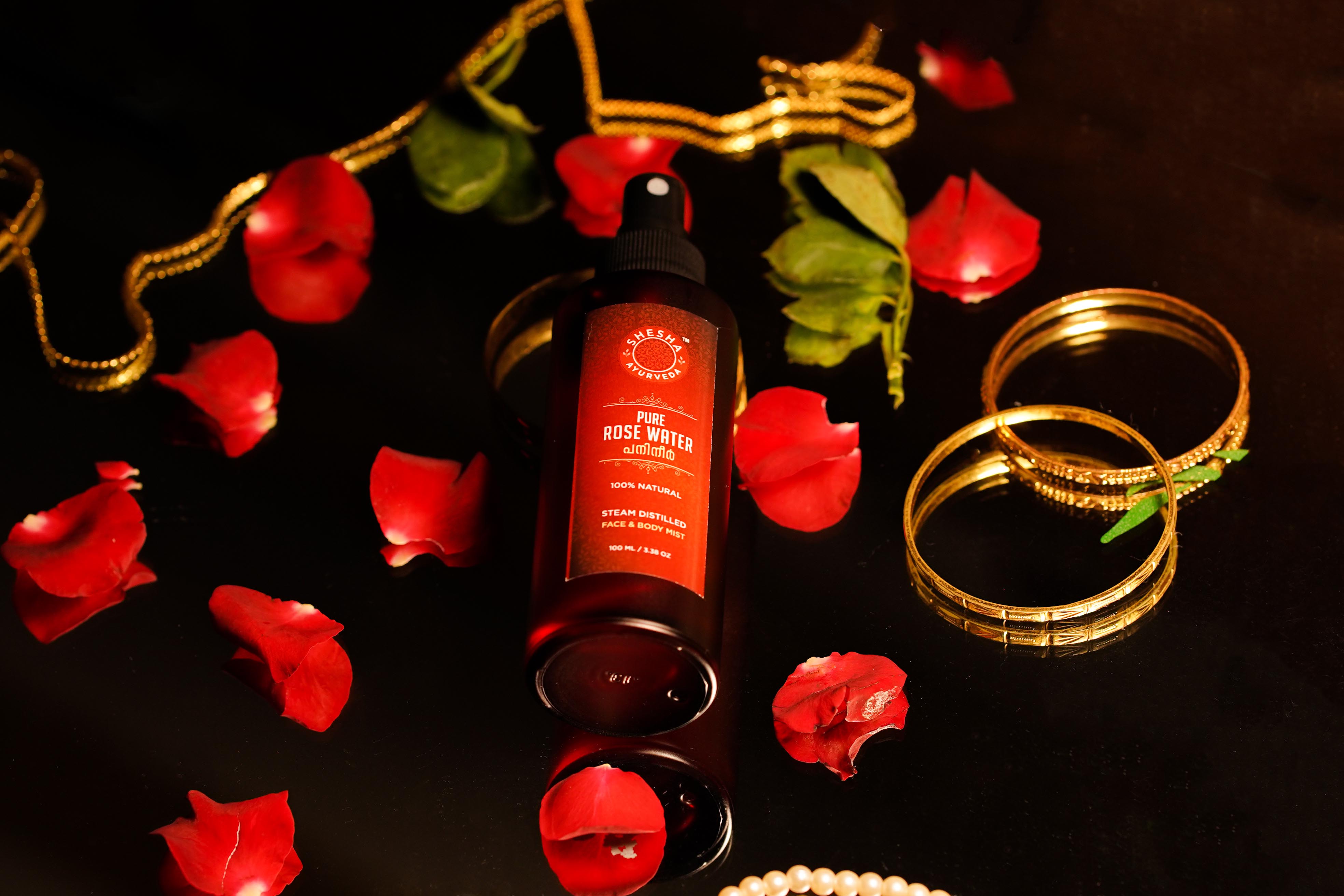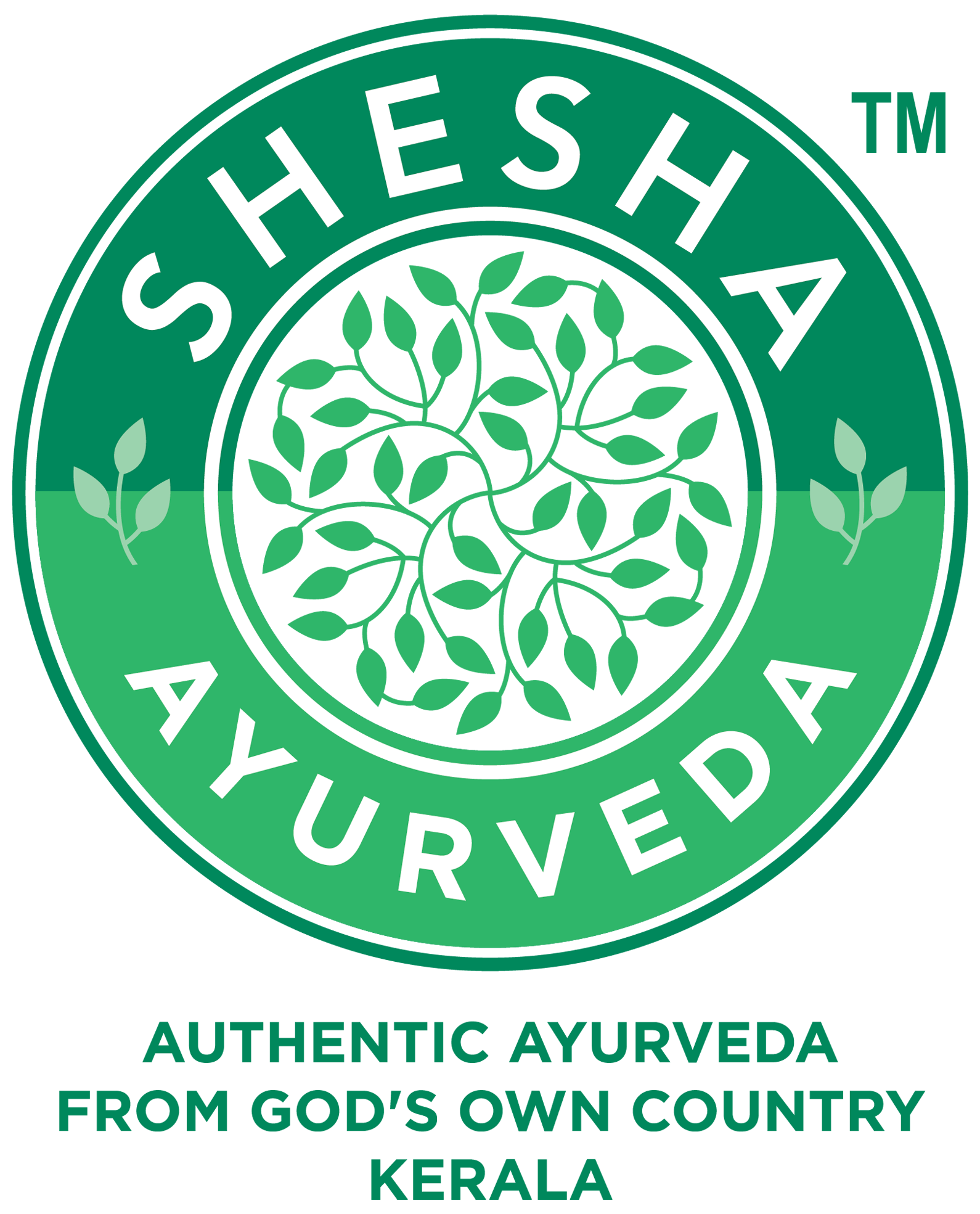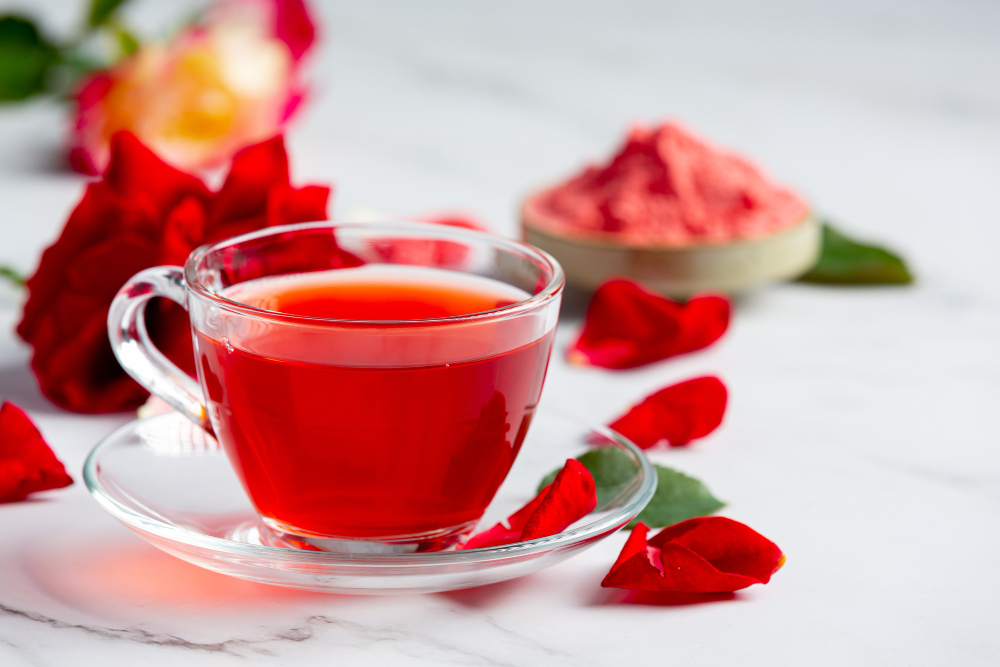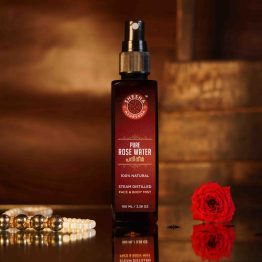Rosewater is an elixir of beauty. It is used not only as a skincare product but also is used for culinary purposes. As the demand for rosewater grew, there came up many different brands that sell rose water. If you go to a supermarket, you can find rosewater filled in different-sized bottles. The price tag, too, varies. Have you ever wondered if these are pure rose water or if they are just scented water? Given below are some tips to identify pure rose water from fake ones.
Keep an eye on the label which describes the making
Pure rose water is obtained by steam distilling fresh rose petals. Hence the smell is never too sweet or overpowering. The fragrance in pure rose water is very subtle, yet you find the aroma of fresh roses, while the chemically manufactured ones will have an overpowering smell. Your ingredients should only contain rose and distilled water.
Foam formation
Shake the rose water bottle vigorously; if it forms a soap-like foam, then it is clear that the product is fake. This confirms the presence of solubilizers which act as surfactants resulting in the formation of soap-like foam. Please note that any liquid shaken vigorously forms bubbles, but the foam mentioned here is soap-like.
A non-irritant
Pure rose water does not irritate your eyes. It provides a cooling sensation to the eyes, even if you spray it above your eyes. According to Ayurvedic texts, the rose is a tridoshic flower and can balance Vata, Pitta, and Kapha doshas. Likewise, rosewater balances the ‘Sadhaka Pitta’ that governs our emotions.
Color
The color of rosewater is always transparent or, say, colorless.

For better results and to avoid confusion, go for Shesha Ayurveda’s steam-distilled rose water. It is made from fresh Kannauj roses and is steam distilled traditionally. Moreover, Shesha Ayurveda’s rose water uses 200 rose petals to make 100ml of pure edible rose water.



